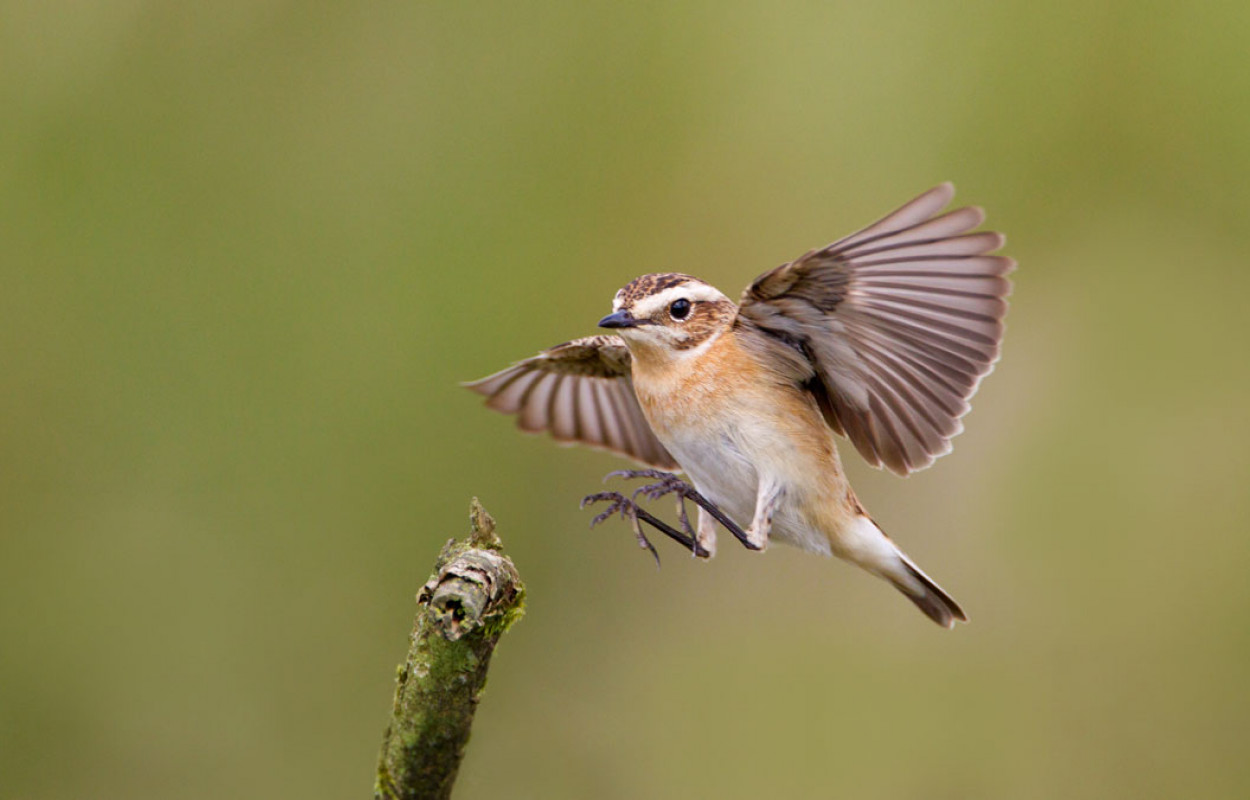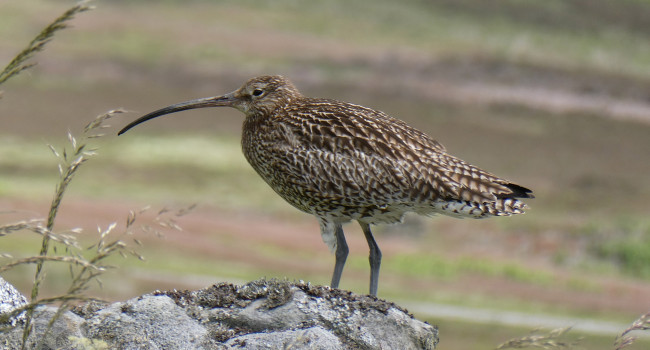Upward elevational shift by breeding Whinchat Saxicola rubetra in response to cessation of grazing in upland grassland

Author(s): Calladine, J. & Jarrett, D.
Published: August 2021
Journal: Bird Study
Digital Identifier No. (DOI): 10.1080/00063657.2021.1963210
Abstract
Capsule: The distribution of breeding Whinchat shifted uphill following cessation of grazing potentially further compromising them through additional squeezing of suitable habitat and environmental niches.
Aims: To assess whether breeding territories occupied by a conservation-priority grassland bird followed different changes in sward structure associated with environmental exposure following cessation of grazing.
Methods: Whinchat territories and breeding success were monitored at upland study sites in Scotland during a period of habitat transformation from livestock grazed grassland to young woodland with herbivores excluded.
Results: After grazing was excluded, there was an upwards elevational shift of breeding attempts (by 43 m in 7 years at one site) and successful breeding at higher elevations. While the study sites were grazed, breeding attempts were more successful at lower elevations and warmer aspects. Despite poor breeding success at lower elevations where taller, denser vegetation restricts available foraging habitat, such areas continued to be occupied by territorial Whinchats.
Conclusions: The conservation of grassland birds within afforestation schemes could be supported by maintaining some open habitats at suitable elevations. However wider conservation of grassland birds, including within forested and also pastoral high nature value farmed landscapes would benefit from improved understanding of the mechanisms operating within these dynamically changing habitats.Managing land for the conservation of birds is a balancing act - different species require different conditions in order to thrive. One way to manage land is by grazing, either by wild or domestic animals. In the case of domestic livestock, when the use of that land changes and livestock are no longer grazing, it provides an opportunity to assess how the resulting habitat change affects the distribution and breeding success of bird species. What is arguably even less well understood is the role of climatic variation at the local scale (micro-climate) and how that can interact with land management to influence how birds respond to change.
Whinchats are being increasingly prioritised as a species for conservation action and as an indicator of the condition of grassland habitats. Studying the distribution of breeding Whinchats in Scottish uplands following cessation of grazing has allowed BTO scientists to explore the impact of habitat transformation on this species.
Numbers of breeding Whinchats were surveyed across eight years in three upland areas of central Scotland. One of these areas ceased grazing during the study period, one before the study and one continued to be grazed - thus allowing for a comparison on how, where and when this affected breeding Whinchat.
Following the removal of grazing, Whinchat breeding territories tended to move to higher areas, which is where the ground vegetation structure remains more varied and, crucially, some shorter grassland remains. While the study sites were grazed, Whinchats tended to occur, and their breeding attempts were more successful, at lower elevations and with warmer temperatures. After grazing ceased, these birds appeared to follow the remaining suitable habitat structures which generally took them into areas with a harsher and less suitable microclimate.
This work shows the importance of not only maintaining suitably mixed habitat structures that can support grassland birds such as Whinchats, but to ensure also that those areas have a suitable microclimate for those species.







Share this page